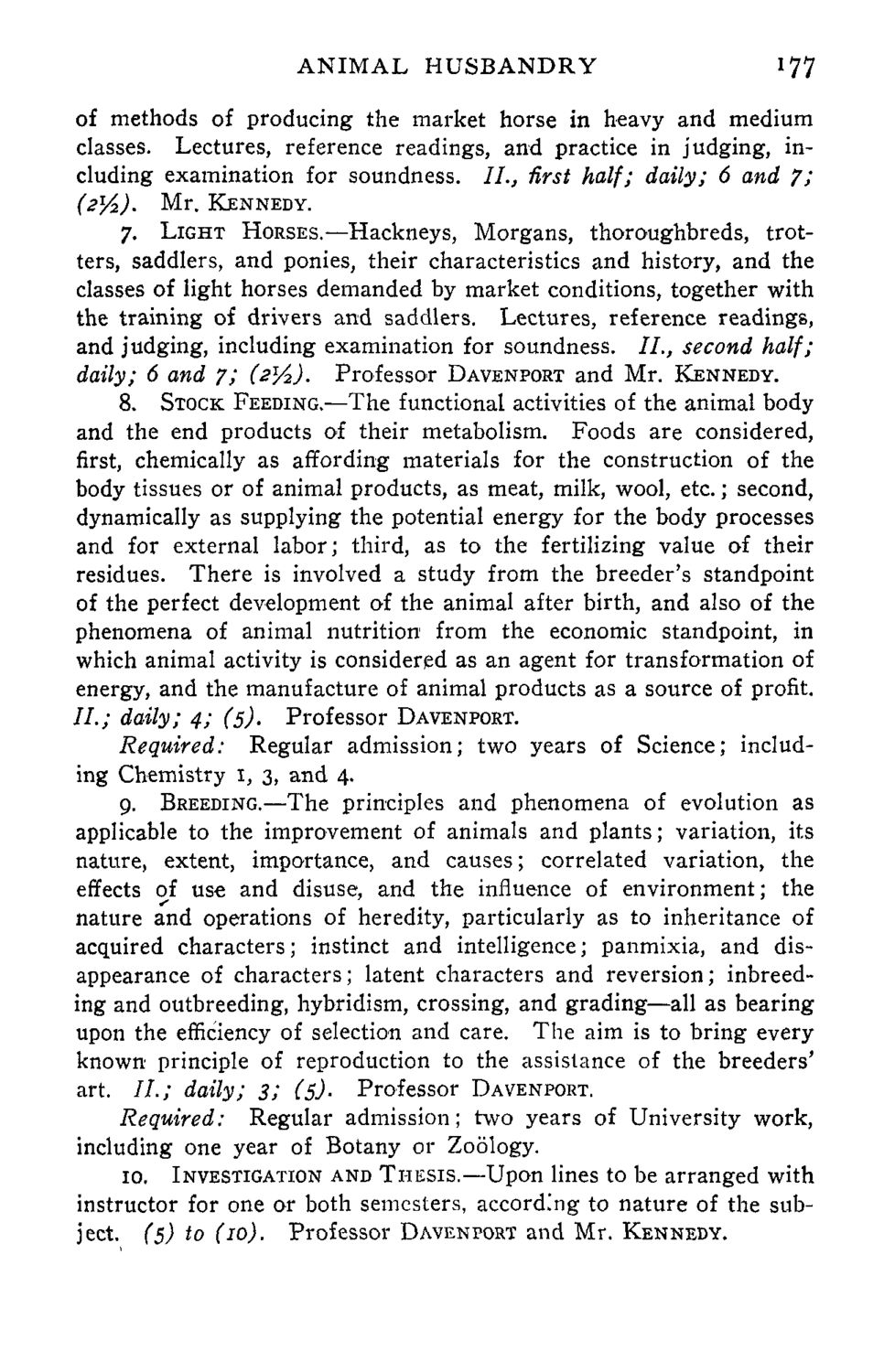| |
| |
Caption: Course Catalog - 1899-1900
This is a reduced-resolution page image for fast online browsing.

EXTRACTED TEXT FROM PAGE:
ANIMAL HUSBANDRY 177 of methods of producing the market horse in heavy and medium classes. Lectures, reference readings, and practice in judging, including examination for soundness. II., first half; daily; 6 and 7; (2^/2). Mr. KENNEDY. 7. LIGHT HORSES.—Hackneys, Morgans, thoroughbreds, trotters, saddlers, and ponies, their characteristics and history, and the classes of light horses demanded by market conditions, together with the training of drivers and saddlers. Lectures, reference readings, and judging, including examination for soundness. 27., second half; daily; 6 and 7; (21/2). Professor DAVENPORT and Mr. KENNEDY. 8. STOCK FEEDING.—The functional activities of the animal body and the end products of their metabolism. Foods are considered, first, chemically as affording materials for the construction of the body tissues or of animal products, as meat, milk, wool, etc.; second, dynamically as supplying the potential energy for the body processes and for external labor; third, as to the fertilizing value of their residues. There is involved a study from the breeder's standpoint of the perfect development of the animal after birth, and also of the phenomena of animal nutrition from the economic standpoint, in which animal activity is considered as an agent for transformation of energy, and the manufacture of animal products as a source of profit. //.; daily; 4; (5). Professor DAVENPORT. Required: Regular admission; two years of Science; including Chemistry I, 3, and 4. 9. BREEDING.—The principles and phenomena of evolution as applicable to the improvement of animals and plants; variation, its nature, extent, importance, and causes; correlated variation, the effects of use and disuse, and the influence of environment; the nature and operations of heredity, particularly as to inheritance of acquired characters; instinct and intelligence; panmixia, and disappearance of characters; latent characters and reversion; inbreeding and outbreeding, hybridism, crossing, and grading—all as bearing upon the efficiency of selection and care. The aim is to bring every known principle of reproduction to the assistance of the breeders' art. II.; daily; 3; (5). Professor DAVENPORT. Required: Regular admission; two years of University work, including one year of Botany or Zoology. 10. INVESTIGATION AND THESIS.—Upon lines to be arranged with instructor for one or both semesters, according to nature of the subject. (5) to (10). Professor DAVENPORT and Mr. KENNEDY.
| |